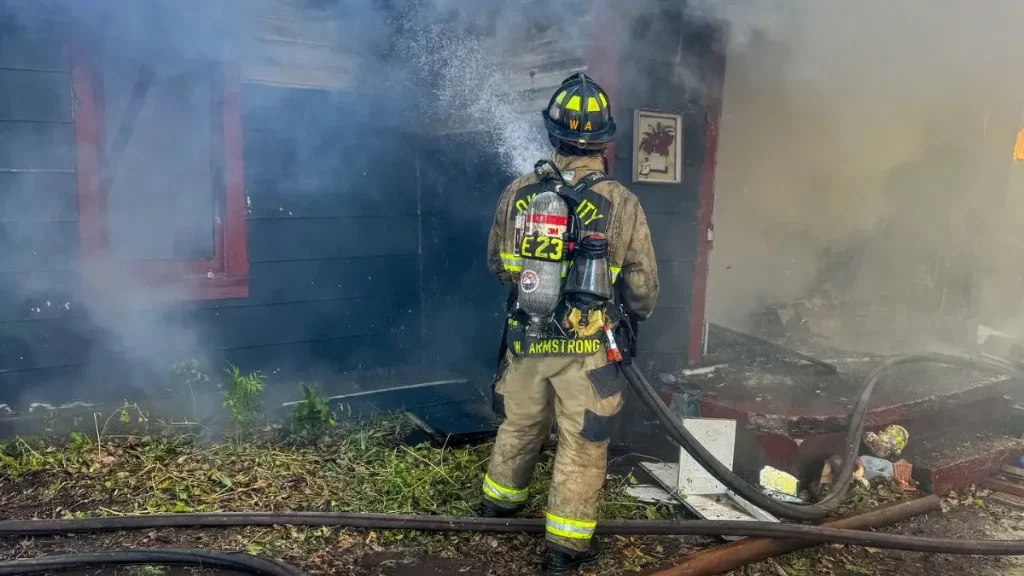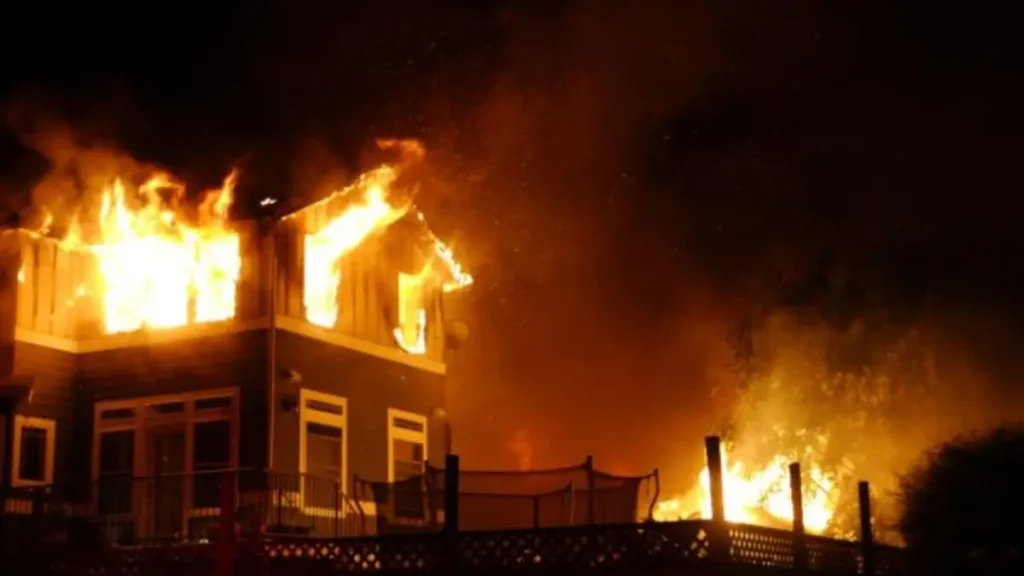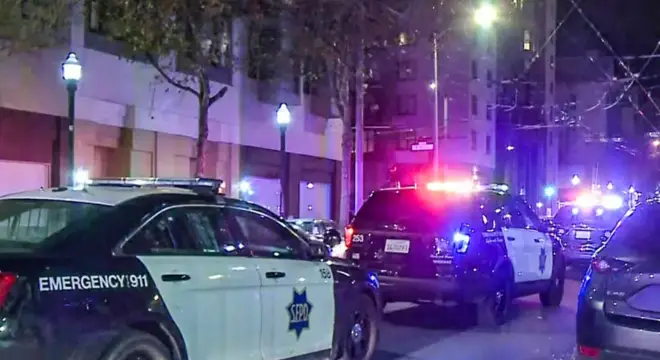Oklahoma City Home Considered Total Loss After Fire; 2 Escape
I’ll never forget the first time I saw a home completely engulfed in flames—it’s a feeling that sticks with you. On Monday morning, firefighters rushed to a small single-story house near Southeast 13th and Durland, and when they arrived, the home was fully consumed by fire. The initial reports had everyone worried that someone might still be inside.
Luckily, both occupants were found outside unharmed. Reading about it, I couldn’t help but feel relieved. In an instant, a life can change, but thanks to quick response and a bit of luck, no one was hurt. The home itself, sadly, is considered a total loss.
As I dug deeper into this incident, I realized it’s not just about one house or one fire—it’s a reminder of how quickly things can escalate and why being prepared matters.
What Happened: Details of the House Fire?

When I first read the report on OKC Fox, I could picture the scene clearly: a small, single-story home near Southeast 13th and Durland fully engulfed in flames. Firefighters arrived quickly, but the intensity of the fire meant the house was already a total loss by the time they got there.
The fire department worked fast, coordinating multiple units to contain the blaze and make sure no one else was at risk. The cause of the fire is still under investigation, which reminds me how unpredictable these situations can be—you never know what will trigger a fire.
Even though no injuries were reported, the scale of the destruction is a stark reminder that preparation and awareness are critical. I can’t stress enough how important it is to have a working smoke alarm and a clear escape plan
Fires can escalate quickly, and unfortunately, total losses like this aren’t uncommon—similar to what happened in a vacant Illinois home recently, where firefighters arrived too late to save the structure.
How Residents Escaped: Quick Thinking Saves Lives
According to the official OKCFD Facebook post, both residents were found outside the home unharmed. Reading this, I felt a mix of relief and awe—escaping a house fire is not easy, and their safety shows how quick thinking and remaining calm can make all the difference.
It also made me think: in moments like this, every second counts. Having an exit strategy, knowing your surroundings, and staying low to avoid smoke can save lives.
If you haven’t already, take a moment today to walk through your own home and think: how would you get out if something like this happened?
Fire Prevention & Safety Tips
I know it’s easy to think, “It won’t happen to me,” but fires can strike anyone, especially as we move into colder months. Here’s what I recommend:
- Smoke alarms: Test them monthly. Replace batteries at least once a year.
- Escape plan: Map out two ways out of each room. Practice it with everyone in your household.
- Fire extinguishers: Keep one in your kitchen and near any heat sources, and know how to use it.
Following these steps isn’t complicated, but they can make all the difference if the worst happens. The NFPA notes that working smoke alarms reduce the risk of death in a home fire by about 60%—that’s huge.
Community & Local Support
One thing I love about Oklahoma City is how the community comes together in moments of crisis. Neighbors often check in, and the fire department steps up beyond just fighting flames.
Social media posts, like the one from OKCFD, show that local officials and residents are ready to provide support, whether that’s temporary shelter, donations, or guidance.
I like to think that even small gestures—like helping a neighbor replace smoke alarm batteries or sharing fire safety tips—can create a ripple effect that saves lives.
Being aware of community resources gives you a safety net beyond your own preparation.
Alongside neighbors and local authorities, many residents now use messaging groups to share alerts and safety tips during incidents. Platforms like community WhatsApp channels often keep people informed in real time, helping them stay prepared without relying solely on official alerts.
Steps to Take When Your Home is a Total Loss

If a fire destroys your home, it’s overwhelming, I get it. But there are steps you can take immediately:
- Document everything: Take photos of damage if safe, keep receipts, and note personal items lost.
- Contact your insurance company: File a claim as soon as possible and ask about temporary living support.
- Stay informed: Local authorities or official websites often provide guidance for disaster recovery.
It’s not just about replacing things—it’s about regaining a sense of security and control. Preparing for the possibility in advance makes the process smoother if tragedy strikes.
Oklahoma City Fire Trends: What Residents Need to Know
As I looked into this incident, I realized it’s part of a bigger picture. Oklahoma City sees a rise in residential fires, especially during colder months. According to fire department reports, most of these fires start from cooking accidents, heating equipment, or electrical issues.
Understanding these trends isn’t just interesting—it can save your life. Knowing the common risks helps you focus on prevention where it matters most. I like to check my home for overloaded outlets, keep space heaters away from flammable items, and never leave cooking unattended. Small habits like these dramatically reduce your risk.
If you want context, nationally, the NFPA reports that nearly three out of five home fire deaths happen in homes without working smoke alarms. That’s a wake-up call for all of us.
Oklahoma City sees a rise in residential fires, especially during colder months. Fires like these remind me of other incidents across the country, including a home in East Louisville where residents were displaced but unharmed, and a Wisconsin attic fire that thankfully caused no injuries. Seeing these trends makes it clear why prevention and preparation are critical everywhere.
Immediate Help and Fire Safety Resources
It’s one thing to read about fires and another to know what to do if it happens to you. Having emergency contacts and resources handy can make all the difference. Here’s what I keep on my fridge and in my phone:
- Oklahoma City Fire Department: Call 911 in an emergency. For non-emergency help or smoke alarm installation, dial 405-316-2337.
- Red Cross Oklahoma City chapter: Provides temporary shelter and disaster guidance.
- Fire safety guides: NFPA and local OKCFD websites offer practical tips, checklists, and educational resources.
You don’t have to memorize everything, but knowing where to turn and having a plan reduces panic and improves your chances of getting everyone out safely.
Key Lessons from This Oklahoma City House Fire
Reading about this fire, I kept thinking: it’s not just a news story—it’s a reminder to act before tragedy strikes. Here’s what I’ve taken away, and what I hope you’ll consider too:
- Preparation saves lives: Test smoke alarms, make an escape plan, practice it.
- Community matters: Neighbors, local organizations, and fire departments are part of your safety net.
- Awareness is power: Understanding seasonal trends and common causes helps you prevent disasters.
- Act quickly: If disaster strikes, knowing your steps—call emergency services, document damage, follow safety guidelines—makes recovery smoother.
I’d love to hear from you—have you reviewed your home’s fire safety plan lately? Taking just a few minutes today could make all the difference tomorrow.
You don’t have to memorize everything, but knowing where to turn and having a plan reduces panic and improves your chances of getting everyone out safely. For more detailed guides on fire safety and home preparedness, visit our Home Incidents section to explore tips, checklists, and actionable advice.
Disclaimer: This article is for informational purposes only and reflects publicly available reports. It does not replace professional advice or official guidance. Always follow instructions from local authorities and fire safety experts in emergency situations.


